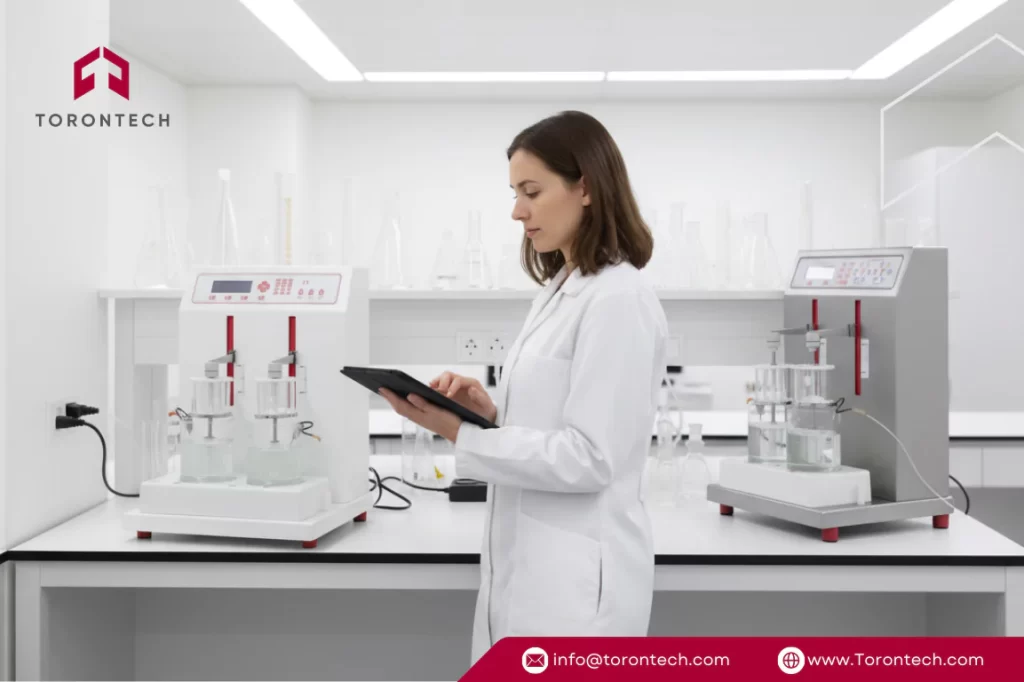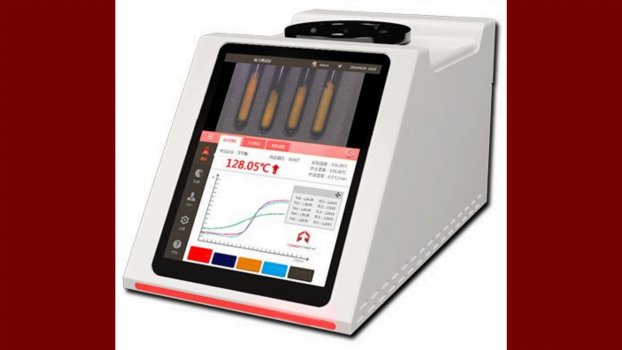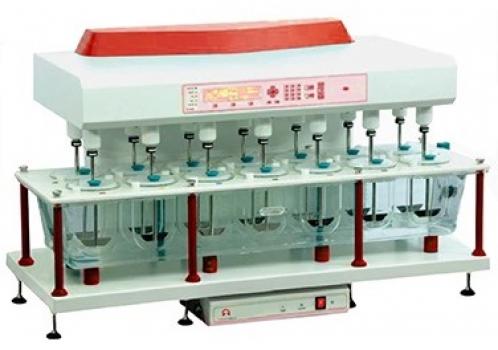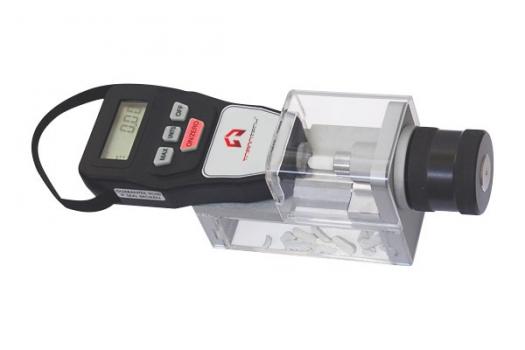The way a lab handles its equipment is what separates the good operations from the great ones. When it comes to the gear that verifies your product’s performance, getting the calibration of disintegration test apparatus absolutely correct is a massive factor for success.
Many people see this procedure as a routine task, but from our perspective, a proper disintegration apparatus calibration is a foundational part of product quality. So, we’re going to show you how to get this procedure dialed in. This is how you ensure your disintegration testing is indisputably reliable.
Why “Good Enough” Isn’t Good Enough for Your Disintegration Tester
This machine’s entire purpose is to simulate what happens in the body. If its operating parameters are off, you’re working with flawed information.
That flawed information can lead to rejecting a perfectly good batch or, far worse, approving a product that doesn’t meet quality standards.
We believe an improper disintegration apparatus calibration is one of the most preventable setbacks a lab can face. It’s about making sure your equipment provides accurate data, every single time.
Related article: USP 701 & USP 2040 Disintegration Test Guide
The 5 Critical Points for the Calibration of Disintegration Apparatus as per USP
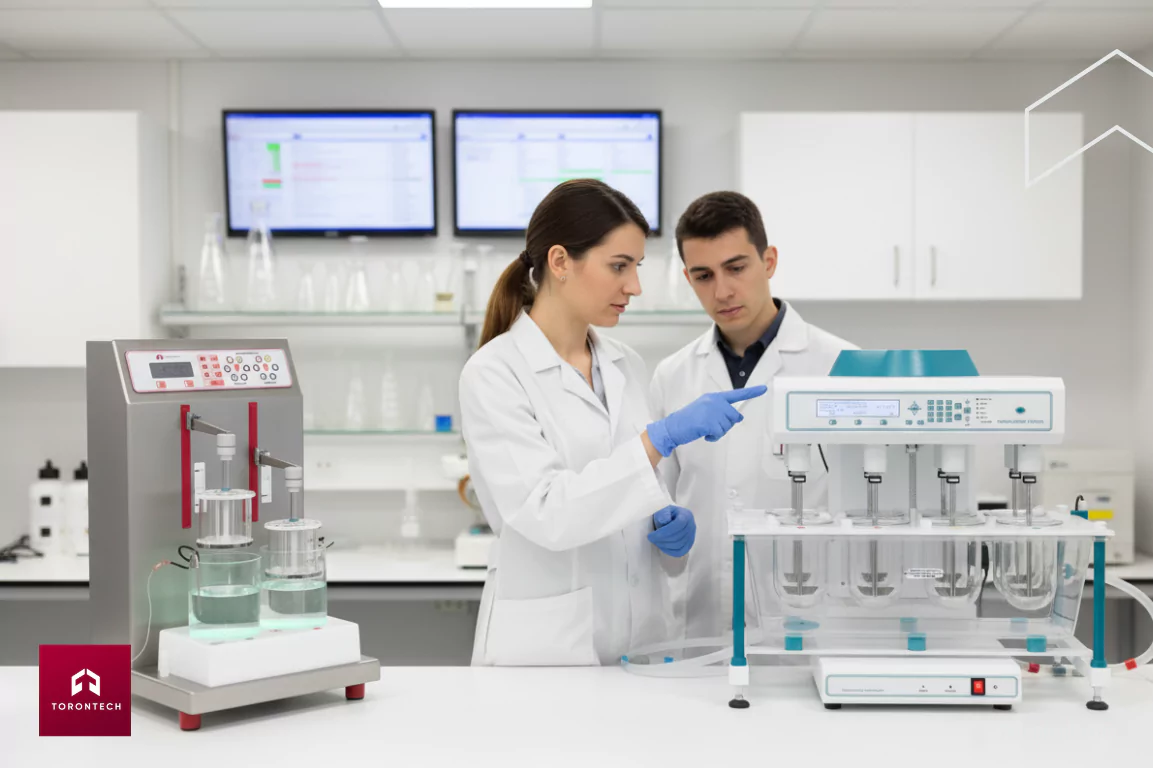
For results that are pure perfection, it’s essential to get these five points right during the calibration of disintegration apparatus as per USP. There are no shortcuts.
1. Maintaining a Stable Water Bath Temperature
The temperature of the immersion fluid directly influences the rate at which a tablet’s binders and excipients break down.
If the bath is too warm, disintegration can be artificially accelerated, potentially masking a formulation problem. If it’s too cool, the process will slow down, risking a false failure.
That’s why the entire system needs to hold at a stable 37°C, plus or minus 2 degrees Celsius.
2. A Consistent Stroke Frequency
This steady, rhythmic movement is designed to simulate the gentle mechanical agitation within the gastrointestinal tract.
If the frequency is too fast, too slow, or erratic, the test no longer represents physiological conditions. This leads to results that are not reproducible, which is a major compliance issue.
You need a highly consistent 29 to 32 cycles every minute to ensure every test is comparable.
3. Verifying the Stroke Length
The travel distance of the basket is critical for ensuring proper fluid dynamics.
The stroke must be long enough to completely immerse the tablet on the downstroke and then lift it high enough on the upstroke to allow disintegrated particles to pass through the mesh. If the stroke is too short, the mechanical action is insufficient, which can artificially prolong the recorded time.
You’re looking for a measurement that is squarely between 53 and 57 millimeters.
4. Verifying Timer Accuracy
Disintegration is a time-based analysis, making the timer one of the most critical components of the entire system. For formulations that are designed to break apart quickly, even a small inaccuracy of a few seconds can be the difference between an accepted batch and an out-of-specification result.
An inaccurate timer can completely invalidate your results, so it must be accurate to within ±1 second for every minute it operates.
5. Inspecting the Basket Assembly and Mesh Integrity
The physical components are just as important as the electronic settings.
The wire mesh at the bottom of the basket is the gatekeeper that determines when disintegration is complete. This principle is the same whether you are inspecting the baskets on a compact unit like the ToronSDT-3 or a high-throughput, six-station model like the ToronDT-6AL.
The openings and dimensions must align perfectly with USP specifications.
Frequency of Disintegration Apparatus Calibration
A frequent point of discussion with our clients is how often to perform these checks. While a semi-annual schedule is a common baseline for a full disintegration apparatus calibration, we advise a more tailored approach based on actual conditions. A sensible frequency is determined by:
- Intensity of Use: Equipment that operates continuously will naturally require more frequent checks—perhaps quarterly.
- Manufacturer Guidance: The original equipment manual provides a recommended starting point that should always be considered.
- Your Own Quality Standards: Your internal SOPs may, and often should, demand a stricter schedule.
- Post-Maintenance Verification: We consider it mandatory to perform a full calibration after any significant service.
Documentation for Your Disintegration Apparatus Calibration
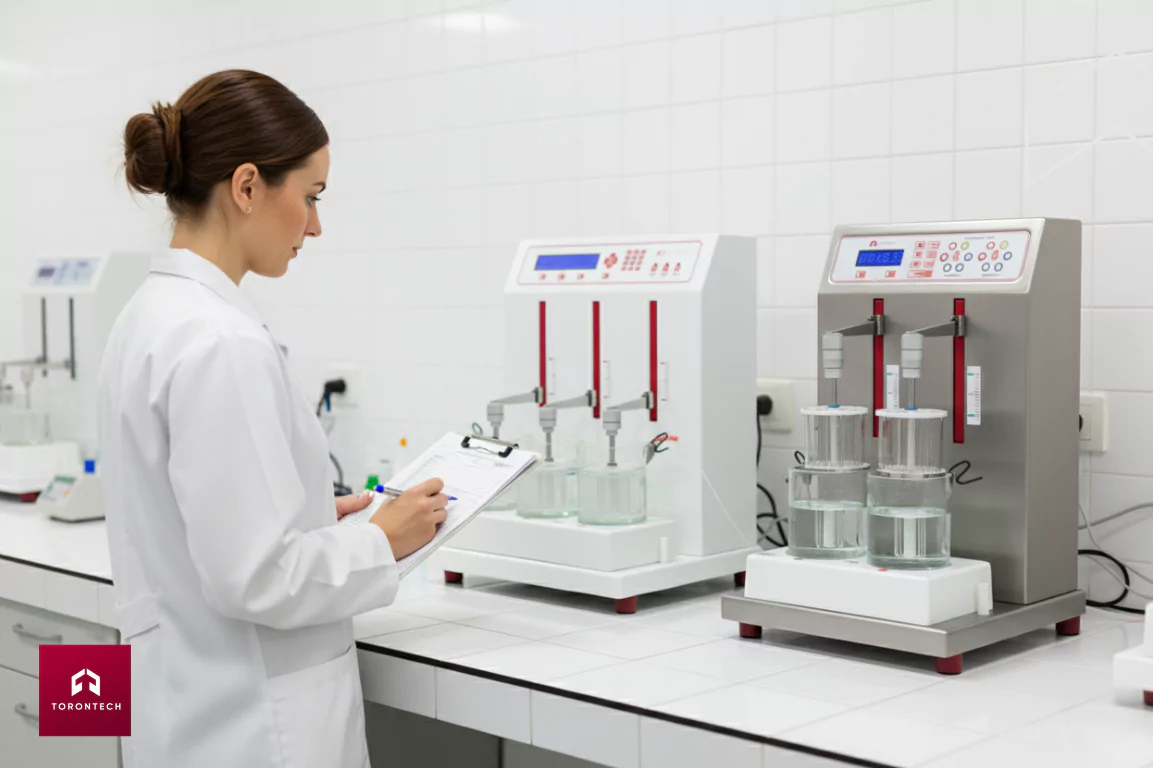
In this industry, if an action wasn’t documented, it never happened. Proper records create a clear and defensible audit trail for every calibration of a disintegration test apparatus, which is fundamental for any regulatory inspection.
Key Components of an Audit-Proof Calibration Record:
Your records are the primary evidence of your equipment’s fitness for use. A strong record should be ALCOA+ compliant and must include:
- Unique Equipment Identification: The specific ID number and serial number.
- Standards Used for Calibration: The IDs of the calibrated tools used.
- The Raw Data: The actual measurements recorded (e.g., “38.1 °C,” “30 cpm”), not just a “Pass” or “Fail.”
- Record of Adjustments: A clear description of any corrective actions taken.
- Attribution and Date: The legible signature of the technician and the date the work was performed.
- Next Scheduled Date: The official due date for the next calibration cycle.
- Digital Systems and Data Integrity: While paper logbooks are still prevalent, the move toward digital records continues. If your lab uses a digital system, you must ensure it is compliant with regulations like FDA 21 CFR Part 11. This is why modern instruments, such as our fully automated ToronDT-Auto, are designed for seamless integration, ensuring that your data capture is both effortless and compliant.
5 Common Issues in the Calibration of Disintegration Test Apparatus
We’ve seen these issues happen in the field. Here are five of the most common problems you might encounter during the calibration of a disintegration test apparatus.
Scenario 1: The Temperature Won’t Stabilize.
- What it looks like: The water bath is running too hot and won’t hold within the required 37°C range.
- Our recommendation: The thermostat has likely failed. A machine running too hot will produce falsely accelerated results. That component needs to be replaced.
Scenario 2: Inconsistent Stroke Rate.
- What it looks like: The basket’s movement is jerky, and the speed is fluctuating outside the 29-32 cpm range.
- Our recommendation: In most cases, the drive belt is worn or has lost tension. The first action should be to inspect the belt and tighten or replace it.
Scenario 3: Corroded or Clogged Mesh.
- What it looks like: The screen at the bottom of the basket shows signs of corrosion or is blocked with residue.
- Our recommendation: This is a critical failure that leads to inaccurate results. That basket assembly must be replaced immediately.
Scenario 4: You Have Damaged Glassware.
- What it looks like: There’s a small crack in a beaker or a chip on the edge of a glass tube.
- Our recommendation: These are not minor issues. A cracked beaker is a safety risk, while a chipped tube can impede a tablet. All damaged glassware must be removed from service.
Scenario 5: The Timer Is Malfunctioning.
- What it looks like: The timer is not keeping accurate time, drifting by several seconds per minute.
- Our recommendation: This indicates a faulty electronic component. An untrustworthy timer invalidates every result. The unit must be taken out of service and repaired.
Torontech: For Reliable Disintegration Testing
At Torontech, our position is that achieving total confidence in your testing equipment shouldn’t be a financial burden.
The principles we’ve just covered are central to our design philosophy. Our range of disintegration testers—from the workhorse ToronDT-2SA and multi-station ToronDT-3X to the high-capacity ToronDT-6AL and the fully automated ToronDT-Auto—is engineered to meet and exceed the demanding standards of the USP.
If your lab could benefit from equipment that removes these variables and delivers consistent performance, we invite you to explore our solutions. Contact our team of experts today to discuss your specific requirements and receive a no-obligation quote. We are here to support your commitment to excellence in manufacturing.
Achieve Consistent Disintegration, Batch After Batch
Explore cost-effective Disintegration Testers for reliable results.
Frequently Asked Questions (FAQ)
2. What are the essential tools needed for a proper disintegration apparatus calibration?
To perform the calibration correctly, you will need a set of certified tools. This includes a calibrated digital thermometer for the water bath, a calibrated stopwatch for timing the stroke frequency, and a calibrated ruler or vernier calipers to accurately measure the stroke length.
3. Which specific USP chapter provides the guidelines for this calibration?
The primary source for these standards is the United States Pharmacopeia (USP) General Chapter <701>. This chapter details all the specific acceptance criteria for the apparatus, including temperature, stroke rate and length, and the physical dimensions of the basket assembly.
4. What is the most common reason for a test to produce inaccurate results?
Besides electronic failure, the most common issue we see is related to the physical condition of the basket assembly. A warped, corroded, or clogged wire mesh can physically prevent disintegrated particles from passing through, which leads to an artificially long and incorrect disintegration time.
5. Why can't we just write "Pass" in our logbook if the equipment meets the criteria?
Regulatory auditors require an "audit trail" with raw data. Simply writing "Pass" does not provide evidence of what was actually measured. You must record the exact values (e.g., "37.5 °C," "31 cpm," "54 mm") to prove that the equipment was operating demonstrably within the acceptable limits at the time of calibration.

